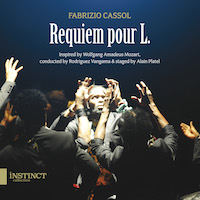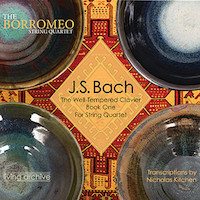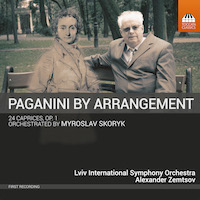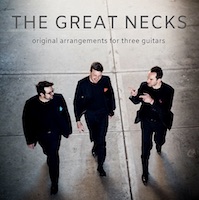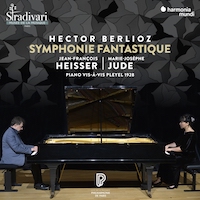(Dis)Arrangements 10: Miscellany
|
Grant Chu Covell [February 2019.]
Fabrizio CASSOL: Requiem pour L. (2017). Lhilhi Nobulumko Mngxekeza (sop), Owen Metsileng (ten), Stephen Diaz, Rodrigo Ferreira (c-ten), Fredy Massamba, Russell Tshiebua, Boule Mpanya (vocals), Joao Barradas (acc), Niels Van Heertum (euph), Kojack Kossakamvwe, Rodriguez Vangama (e-guit), Bouton Kalanda, Erick Ngoya, Silva Makengo (likembe), Michel Seba (perc), Rodriguez Vangama (cond.). Outhere OUT 663 (1 CD) (https://outhere-music.com/). Step aside Süssmayr, Mozart’s Requiem sustains Cassol’s impassioned reinterpretation. In concert, there is a projected video and actions for musicians and singers (directed by Alain Platel). On recording, we slip seamlessly between familiar Mozart melodies, the Requiem text, and new lyrics in Lingala, Swahili, Kikongo, Tshiluba, and Lari. The ensemble consists of six vocalists, three likembes (thumb pianos), accordion, guitar, bass, percussion, and the necessary euphonium (for the Tuba mirum of course). Cassol appropriates his predecessor’s somber tunes and harmonies, and the singers backed by an energetic band find joy via an African lens. Cassol, who has also similarly visited Monteverdi and Bach, has taken a deep soak in the original and transformed it. Who knew the Confutatus est and Lacrimosa could be transposed to a different continent and flourish with electric guitar and trap set?
J.S. BACH: The Well-Tempered Clavier, Book I, BWV 846-869 (ca. 1722; arr. Nicholas KITCHEN, 2015-17). Borromeo String Quartet: Nicholas Kitchen, Kristopher Tong (vln), Mai Motobuchi (vla), Yeesun Kim (vlc). Living Archive 798577028724 (CD and download) (http://www.borromeoquartet.org/). Bach wrote nothing for string quartet; the genre did not yet exist. String quartets might presumably be envious of Papa Bach’s legacy. In 1987, the Juilliard String Quartet borrowed a viola with an extended lower range and recorded an arrangement of The Art of Fugue (Sony S2K 45 937). Ages before, Mozart arranged some fugues for strings (K. 404 or 405, depending upon which catalog) primarily as exercises (he crafted his own preludes). To pass the time in transit, Nicholas Kitchen, the Borromeo’s first violinist, arranged WTC I for quartet. Right off the bat, up and down bow strokes create unexpected accents. Purists may not endure beyond the first two Prelude and Fugue pairs (C major, BWV 846, and C minor, BWV 847) because of troubling emphasis. A keyboardist offering comparable articulation would be reprimanded. However, less familiar preludes and fugues wink and sparkle in newfound ways, such as the chromatic fugues in D-sharp minor and G-sharp minor, the two-voice E minor fugue, and the bright F-sharp major prelude.
Niccolò PAGANINI: 24 Caprices, Op. 1 (1802-17; arr. Myroslav SKORYK, 1985-2005). Lviv International Symphony Orchestra, Alexander Zemstov (cond.). Toccata TOCC 0463 (1 CD) (http://www.toccataclassics.com/). Watch a violinist tackling Paganini’s Caprices and the challenges are evident immediately. We want the single player to execute the illusion of multiple voices and simultaneous tasks, such as maintaining harmonic motion under a smooth melody (No. 6), imitating other instruments (No. 9), or smoothly fingering rapid doubled octaves (No. 17). Such trials evaporate when an orchestra is on call. Given unlimited resources, Paganini’s Caprices are a double dozen of straightforward melodies and quaint harmonies presented in rudimentary musical forms. As expected, Skoryk specifies instruments pitched lower than the violin for harmonic scaffolding, but his edifices are nonetheless top heavy. The distant and reverberant recording acoustic doesn’t help the majority treble activity (flutes, harp, bells, xylophone, vibraphone, etc.) and the 79-minute sequence becomes too much meringue. Skoryk’s toolbox draws heavily upon percussion and exotics (drum kit, flexatone, banjo, noisemakers, etc.) humorously employed (e.g. Nos. 2 and 5). No. 15 suggests a south of the border dance, goofy brass slides appear in No. 19, and No. 21 becomes a breezy tango. These embellishments are clever individually, however, the entire set grows tiresome. Part of the problem rests with Paganini, but perhaps Skoryk could have devised a concerto, or simply have put forward just a handful which look good in smart clothes. If encountered in sequence, the famous No. 24 contributes an unsatisfactory finale. It could have veered Klangfarbenmelodie or post-modern (Paganini would never have dreamed of Skoryk’s percussion treatments after all), or referenced other composers’ variations (Brahms, Rachmaninoff, Lutosławski, et al.), but no, Skoryk sticks to the source despite adding comic ornaments such as timpani glissandos and percussion flourishes.
“The Great Necks.” Jean SIBELIUS: Finlandia, Op. 26 (1899-1900; arr. Scott BORG). J.S. BACH: Overture from Orchestral Suite No. 3, BWV 1068 (ca. 1730; arr. BORG); Fuga from Chromatic Fantasy and Fugue, BWV 903 (ca. 1717-23; arr. BORG); Nun komm, der Heiden Heiland, BWV 659 (ca. 1748, arr. BORG); Toccata, “Dorian,” BWV 538 (ca. 1708-17; arr. BORG). Heitor VILLA-LOBOS: Chôros No. 5, “Alma Brasileira” (1925; arr. BORG). Isaac ALBÉNIZ: Asturias (1892; arr. BORG). Alexander SCRIABIN: Preludes Nos. 4, 7, 10, 15, and 24 from 24 Preludes, Op. 11 (1888-96; arr. BORG and Matthew ROHDE). Arturo MÂRQUEZ: Danzón No. 2 (1994; arr. ROHDE). The Great Necks: Scott Borg, Adam Levin, Matthew Rohde (guit). Sony Frameworks 1 934830 857536 (1 CD) (http://www.thegreatnecks.com/). This guitar trio is unstoppable. We might gratefully expect pieces associated with strummed strings, such as Albéniz’s familiar Asturias (originally written for piano but today heard frequently on guitar), however Scriabin and Sibelius are a surprise. The orchestral Finlandia is always a crowd pleaser, and delivered here as an opener, we hear a variety of doublings and tremolos meant to convey this nationalist herald’s sweep. The four Bach rescorings, a varied collection echoing Busoni’s ravenous approach to original sources, reveal the trio’s precision execution of distinct voices. In contrast, the five Scriabin Preludes offer trinkets of refracted vapor, and the plucked instruments bring clarity to the Brazilian steps in Villa-Lobos’ Alma Brasileira, originally for piano. The program wraps up with a reformulation of Mârquez’s spirited orchestral Danzón. As with the Sibelius, three guitars can’t fairly compete with an orchestra’s dynamism, but the attempt engages nonetheless. The Bach and Scriabin are the most effective.
Hector BERLIOZ: Symphonie Fantastique, Op. 14 (1830; arr. Jean-François HEISSER, 2018). Jean-François Heisser, Marie-Josèphe Jude (pno). Harmonia Mundi HMM 902503 (1 CD) (http://www.harmoniamundi.com/). The Pleyel Vis-à-vis piano resembles a big square box. Designed for two pianists to sit across from each other, this 1928 piano shares the same sound board and resonator. It is hard to spy stereo effects as the players’ sound coalesces and Heisser and Jude execute with uniformity. I suspect that for the performers, playing the instrument is a special occasion. Berlioz’s Symphonie is here, but its spirit is not. In this sedate opium dream, the duo appears to have everything under control. Heisser’s arrangement proceeds conventionally, glittering less than Liszt’s single-piano transcription with fewer grace notes and leaps. It is easier to imagine the love-struck Berlioz as a single sprawling pianist who must exert himself to simulate an orchestra, rather than as a matched pair who can cover for each other and fill in gaps. The duo is rarely impetuous; for example, there are chromatic passages in the first movement that can become repetitive unless the tempo quickens. In the best performances, the waltz (Un bal) should lunge desperately, but here the dance feels constrained. The Dies irae does not terrify. Towards the end, Heisser offers dissonant chords for the tolling bells. This decision may have harmonic (or even spectralist) merit; however, the tones startle the first time through. Unfortunately, this arrangement is not a good showcase for the piano or for Berlioz.
Albeniz, Bach, Berlioz, Borg, Cassol, Heisser, Kitchen, Marquez, Mozart, Paganini, Rohde, Scriabin, Sibelius, Skoryk, Villa-Lobos
[More (Dis)Arrangements, Grant Chu Covell]
[More
Albeniz, Bach, Berlioz, Borg, Cassol, Heisser, Kitchen, Marquez, Mozart, Paganini, Rohde, Scriabin, Sibelius, Skoryk, Villa-Lobos]
[Previous Article:
Used Bin Troll Tweets KK.]
[Next Article:
Used Bin Troll Tweets LL.]
|
